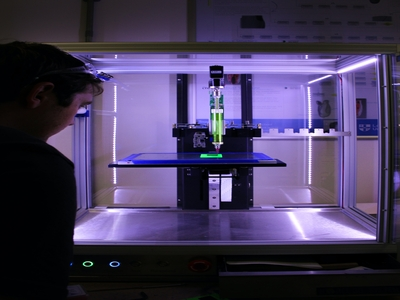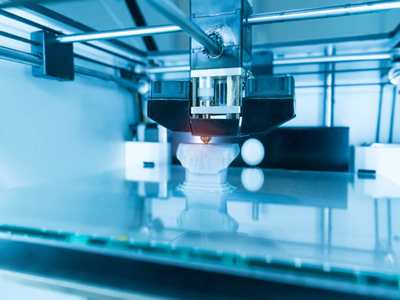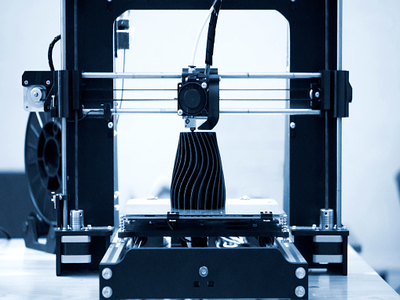How small can a 3D printer print? This is a question that many people are curious about – and for good reason!
Many factors come into play regarding how small of a print 3D printers can produce.
In this blog post, we’ll explore how small a 3D printer can print, as well as discuss some common misconceptions about 3D printing size.
How Small Can a 3D Printer Print?

This is a question we get all the time, and it’s tough to give a straight answer because it depends on the printer.
Some printers have smaller build volumes than others, and some can print smaller objects with more precision.
So, to figure out how small your specific printer can print, you’ll need to research the build volume of your machine and the level of detail it is capable of reaching.
There are some general things we can tell you about how small your printer can go:
- Most consumer-grade printers have a minimum layer height of 0.004 inches (0.102 mm) and cannot produce smaller features than this.
- Most printers have a minimum object size of 0.02 inches (0.508 mm).
If you’re trying to print anything smaller than this, you’ll have to get creative with your techniques.
Check out this video on Micro Prints to see it in action:
How Do 3D Printers Work?

Many people think 3D printers are unable to print very small because they print in a layer that must be one solid piece.
But, many people would be wrong!
Most 3D printers will deposit tiny droplets of material onto the build platform, pixels that are usually much smaller than the end resolution of the print.
For example, a 0.005″ nozzle on a MakerBot Replicator+ can produce pixels that are just 16 microns wide.
But because those pixels are deposited in an overlapping grid pattern, the final printed object will have a resolution 5 times higher than the pixel size: 0.001″ (25 microns).
This technique is called “vector printing” and allows for exact control over the placement of material.
This technique also means that the 3D printer nozzle size does not limit the X and Y axis on a printer.
The only thing that determines how small a 3D model can be printed in the XY plane is the Z height of each layer.
For example, if you are printing with 0.005″ pixels, and each layer is 0.010″ tall, then your smallest feature will be 0.005″ wide by 0.010″ tall.
Read More: Can You Pause a 3D Print? Yes, but only for a certain time, or you risk ruining your prints. Here’s what to know about pausing your 3D printer!
Factors Affecting the Size of Prints

One of the main factors determining the size of a print that a printer can produce is the build volume.
The build volume is the maximum size a printer can print in one go and is determined by the physical dimensions of the printer itself.
For example, if you have a Prusa i32 with a build volume of 250mm x 210mm x 200mm, your maximum print size will be limited to 250mm x 210mm x 200mm.
If you try to print something more significant than this, it will not fit on the bed, and your print will be unsuccessful.
Another factor in the size a 3D printer can print is layer height. Layer height refers to coating thickness, or how large the print can be.
Most people opt for thinner layer heights when printing larger objects as thicker layers take longer to print and result in lower-quality prints.
Read More: How Big Can You 3D Print Something? Thinking of going the opposite way? Here’s how to get BIGGER prints with your 3D printer!
Common Misconceptions About Print Size
One common misconception about print size is that small printers cannot print large objects.
While smaller printers may have smaller build volumes, they can still print large objects as long as they are printed in multiple parts and assembled in post-production.
Any printer can be used to print small things, it just might take a bit longer since the layer height will likely be thinner.
Most Common Types of 3D Printers
There are numerous types of 3D printers on the market and their features and accuracy rely on different printing technologies, processes, and materials.
Fused Deposition Modeling (FDM)

The various types of FDM 3D printers heat and extrude thermoplastic filament to build parts layer by layer.
FDM is the most popular type of desktop printer and offers a wide range of filaments.
Parts made with FDM technology have smooth exterior surfaces but may require post-processing to achieve fine details or tight tolerances.
The minimum feature size for an FDM printer is 0.127 mm (0.005 in.), though it can be pushed down to 0.050 mm (0.002 in.) with smaller nozzle diameters and more sophisticated printers.
Read our related article on the Best FDM 3D Printer for a complete guide and review of the top options out there!
Stereolithography (SLA)
SLA printers use laser curing to solidify the photosensitive resin, building parts layer by layer from the bottom up.
SLA offers very high accuracy and fine detail resolution but is typically more expensive than FDM.
The minimum feature size for an SLA printer is 0.050 mm (0.002 in.), though it can be pushed down to 0.025 mm (0.001 in.) with smaller laser spot sizes and more sophisticated printers.
Digital Light Processing (DLP)
DLP printers use a projector to cure photosensitive resin, building parts layer by layer from the bottom up.
How accurate is 3D printing with DLP? DLP offers high accuracy and fine detail resolution similar to SLA but at a lower price.
The minimum feature size for a DLP printer is 0.125 mm (0.005 in.), though it can be pushed down to 0.080 mm (0.003 in.) with smaller projector pixels and more sophisticated printers.
Read More: Can You Over Cure 3D Resin Prints? Here’s how to cure resin the right way!
Selective Laser Sintering (SLS)
SLS printers use high-powered lasers to fuse nylon powder, building parts layer by layer from the bottom up.
SLS offers high accuracy, acceptable detail resolution, and a wide range of materials but is typically more expensive than FDM or SLA.
The minimum feature size for an SLS printer is 0.100 mm (0.004 in.), though it can be pushed down to 0.070 mm (0.003 in.) with smaller laser spot sizes and more sophisticated printers.
Conclusion
The answer to the question “how small can a 3d printer print?” depends on your specific printer.
To get an accurate answer, you’ll need to do some research on the build volume of your machine and the level of detail it is capable of reaching.
Additionally, keep in mind that most printers have minimum layer heights, nozzle diameters, and object size requirements that you will need to consider when deciding whether your printer is up for the task.
READ MORE